All those who are not indifferent to tea ceremonies, sooner or later ask themselves this question - which teapot is better to choose? It is interesting that the Chinese were the first to brew tea back in the 14th century. For these purposes, they used small clay vessels and could hardly imagine that, after six centuries, such a variety of containers for brewing tea would appear.
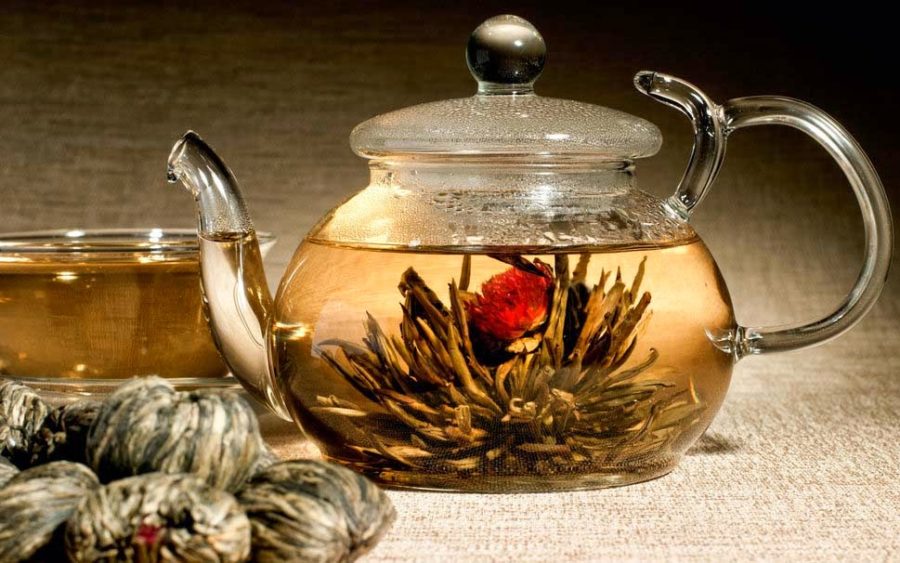
Content
Material selection
In the case of teapots, the choice of material is not only a matter of taste and aesthetic beauty. The quality of the prepared drink, its aroma and the preservation of beneficial properties directly depend on its choice. In addition, for each type of tea, one or another brewing tank is better suited.
Nowadays, you can find teapots made of such materials:
- glass;
- porcelain and earthenware;
- clay;
- cast iron;
- steel.
Thinking about how to choose a teapot, you should consider the strengths and weaknesses of each material.
Glass
For lovers of bound tea (a bunch of dried tea leaves wrapped around one or more dried flowers), this is simply an indispensable material. To see all the beauty of a blooming bouquet, glass fits perfectly. Although the classic large-leafed black tea looks very nice in such containers.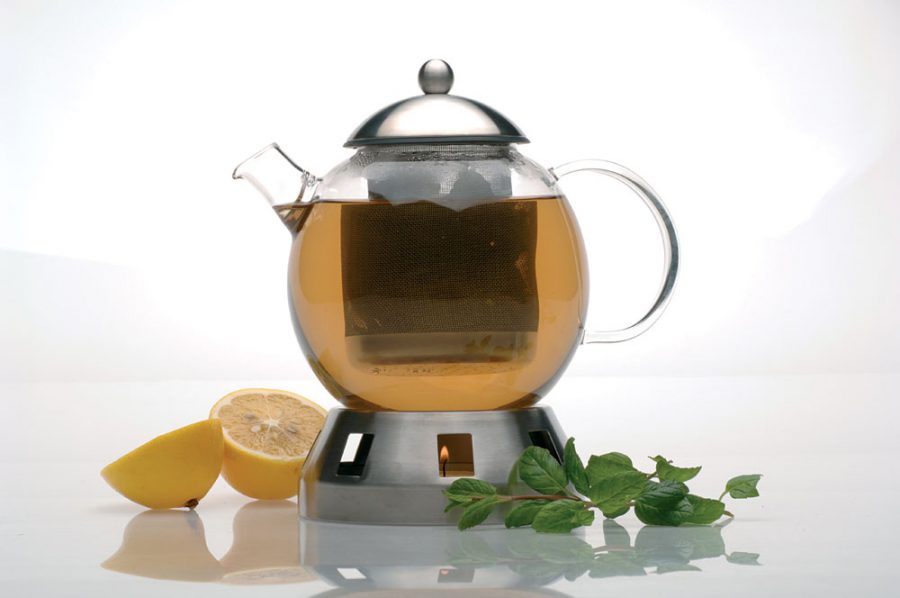
Glass teapots are of the following types:
- Vessel with a nose. Visually, it will be similar to ceramic models. If preference is given to such a teapot, then you should pay attention to the handle so that it is not too close to the case. Otherwise, it will heat up and use such a teapot will be uncomfortable.
- Kettle with a press. As a rule, this is a glass flask with a metal holder. This type of teapot is very popular and is known as a French press. Its advantage is a piston with a mesh, which allows you to decant the tea leaves without tea leaves and get a clean drink.
- A teapot with a filter. Such glass teapots have spring filters at the base of the spout or mesh in which the tea leaves are placed. Such a vessel is very appropriate if small tea is used, because the result will still be a clean drink.
- Heated kettle. At first glance, it does not differ from the usual one with a nose, but it has a special stand under which a candle-pill is placed. This is a good option for those who like a long tea time. In this case, you do not have to drink a cold drink.
The main advantages of glass teapot:
- heat resistance;
- does not add any aftertaste to the drink;
- aesthetic nuance.
But the fact that tea in such teapots are exposed to direct sunlight is still reflected in the taste of tea. In addition, glassware requires careful care, otherwise it will quickly lose its beauty due to streaks of water and handprints.
Porcelain and Faience
 Chinese porcelain is appreciated and very popular all over the world. Such products can rightfully be called a real work of art. Tea made in porcelain retains temperature for a long time and its taste and aroma are most fully revealed. Real Chinese porcelain has only two components - kaolin and porcelain stone. The lack of chemistry allows you to get excellent brewed tea.
Chinese porcelain is appreciated and very popular all over the world. Such products can rightfully be called a real work of art. Tea made in porcelain retains temperature for a long time and its taste and aroma are most fully revealed. Real Chinese porcelain has only two components - kaolin and porcelain stone. The lack of chemistry allows you to get excellent brewed tea.
Among the main disadvantages of porcelain teapots are the following:
- high price segment;
- from frequent temperature differences may crack;
- It’s quite difficult to care for such dishes.
Porcelain teapots come in all sorts of shapes, colors and designs. A teapot in the form of a house is very popular. As a rule, such a pleasure is expensive, but such tea accessories are a whole work of art.
Earthenware teapots are much like porcelain teapots, but they are much cheaper. But they are inferior in strength to porcelain dishes.
Clay
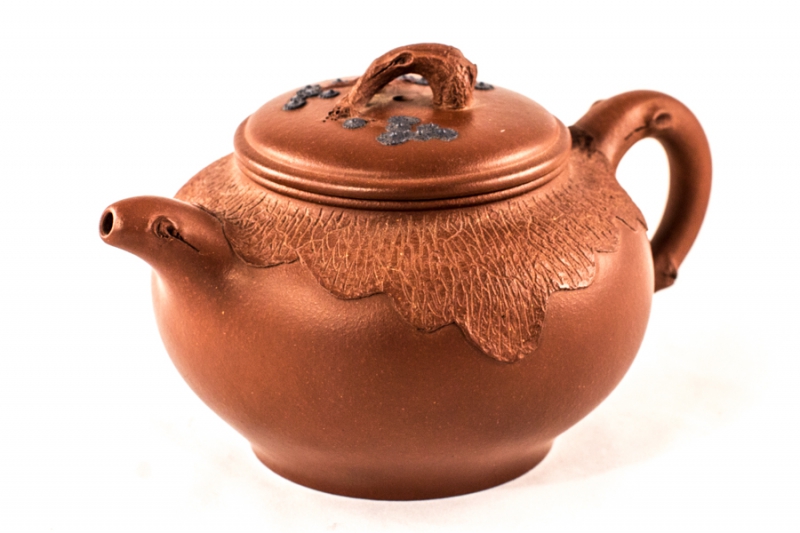 Real gourmets prefer clay teapots. The Chinese claim that this is the best glassware for green tea. This material is appreciated for its heat resistance and long preservation of the taste characteristics and aroma of the drink. Clay teapots come in several forms.
Real gourmets prefer clay teapots. The Chinese claim that this is the best glassware for green tea. This material is appreciated for its heat resistance and long preservation of the taste characteristics and aroma of the drink. Clay teapots come in several forms.
An inexperienced consumer would describe any clay teapot as follows - the teapot body, handle, spout and lid. But Chinese masters can distinguish up to eighteen components in each teapot. Vessels made of dark clay, it is customary to use for puer, and from light - for oolongs and green tea.
Cast iron
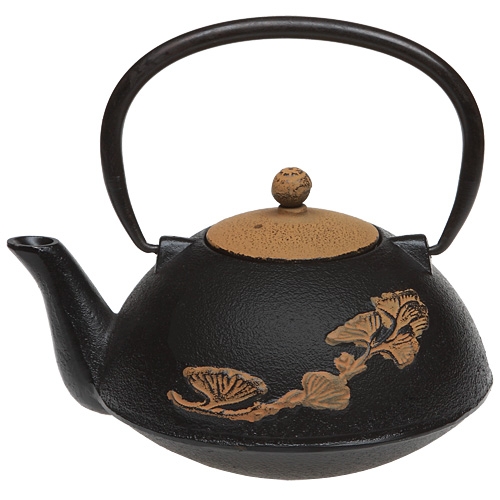 Cast iron teapots are rare, and their price is far from affordable. They are able to retain heat for a long time and do not absorb the aromas of different drinks. Such teapots retain heat longer than porcelain and glass. In addition, such dishes are much stronger than ceramic. They are considered to be one of the best teapots.
Cast iron teapots are rare, and their price is far from affordable. They are able to retain heat for a long time and do not absorb the aromas of different drinks. Such teapots retain heat longer than porcelain and glass. In addition, such dishes are much stronger than ceramic. They are considered to be one of the best teapots.
Since cast iron is not so easy to process, dishes made of such material are usually decorated with drawings and not with artistic decoration, which does not spoil their appearance at all. But the subjective drawback of such dummies is their weight. It is quite impressive with a very small size.
Steel
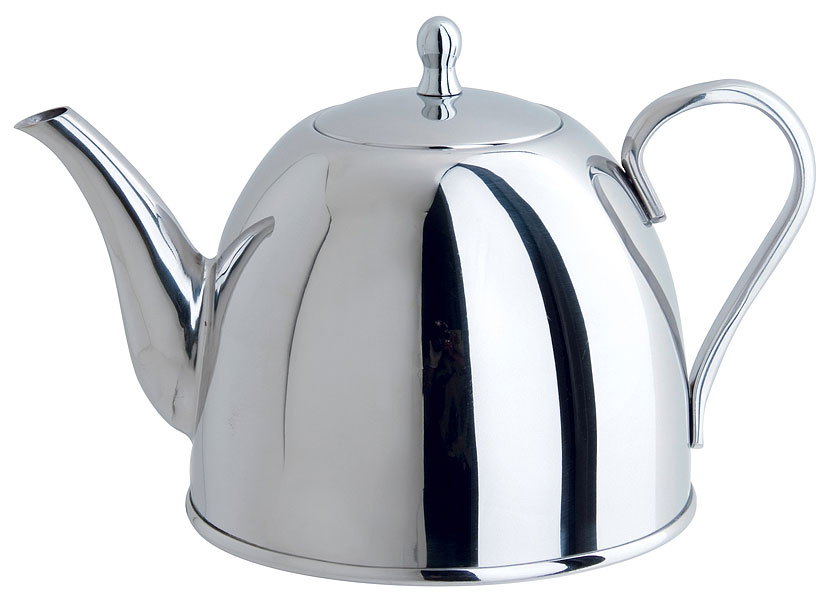 Metal teapots are a good option for daily tea parties. Stainless steel tanks have an excellent appearance. They shine like mirrors. However, they have a significant drawback - the taste of metal. It is unlikely to be suitable for particularly sensitive consumers.
Metal teapots are a good option for daily tea parties. Stainless steel tanks have an excellent appearance. They shine like mirrors. However, they have a significant drawback - the taste of metal. It is unlikely to be suitable for particularly sensitive consumers.
Shape and volume
To date, there are all kinds of forms of tea vessels. The consumer should choose what is closer to him in spirit and meets his preferences. Most teapots can be divided by the type of art style used:
- without the use of decor elements;
- unusual shapes taken from geometry;
- the use of flower arrangements;
- resembling the chrysanthemum petals.
It is desirable that the vessel has a spherical "pot-bellied" shape. Thanks to this, heat will be evenly distributed, and the aroma of tea will be better revealed. The volume of the teapot depends on how many people will use it. For a family of 3-4 people, a capacity of 1-1.5 liters is enough.

Effective Tips
So, in which teapot is it better to brew tea? The answer is simple - in the one that is chosen competently. Having given preference to any particular material, shape and volume, one should also take into account such moments:
- To make the device convenient to use, it should be light enough.
- The lid should sit securely in the neck. When tilted, it should not pop up.
- To leave the steam, there must be a special hole on the lid.
- The vessel should not be chipped or chipped.
- The teapot nose should look up.
- The holder should expand upward, such a handle should be conveniently located in the hand.
Before buying, it would be nice to have a little experiment. Remove the lid from the kettle, tip it upside down and set on a flat surface. Now you should evaluate the neck, handle and opening of the spout. They should be on the same level. Otherwise, tea will spill.
Since everyone has different taste preferences, the best teapots are different for everyone. But a careful approach will help to avoid big disappointments and help to truly enjoy the tea ceremony.